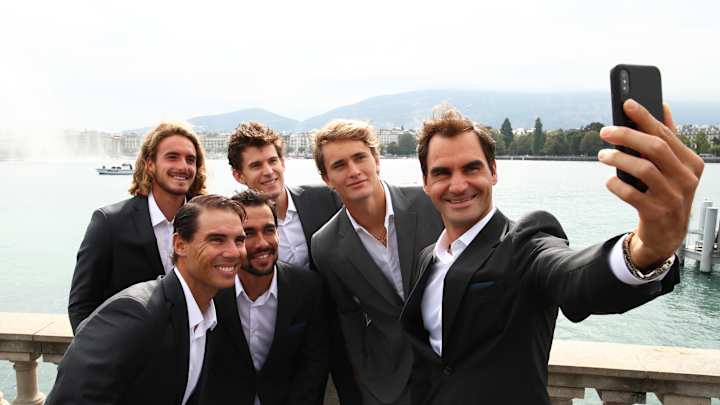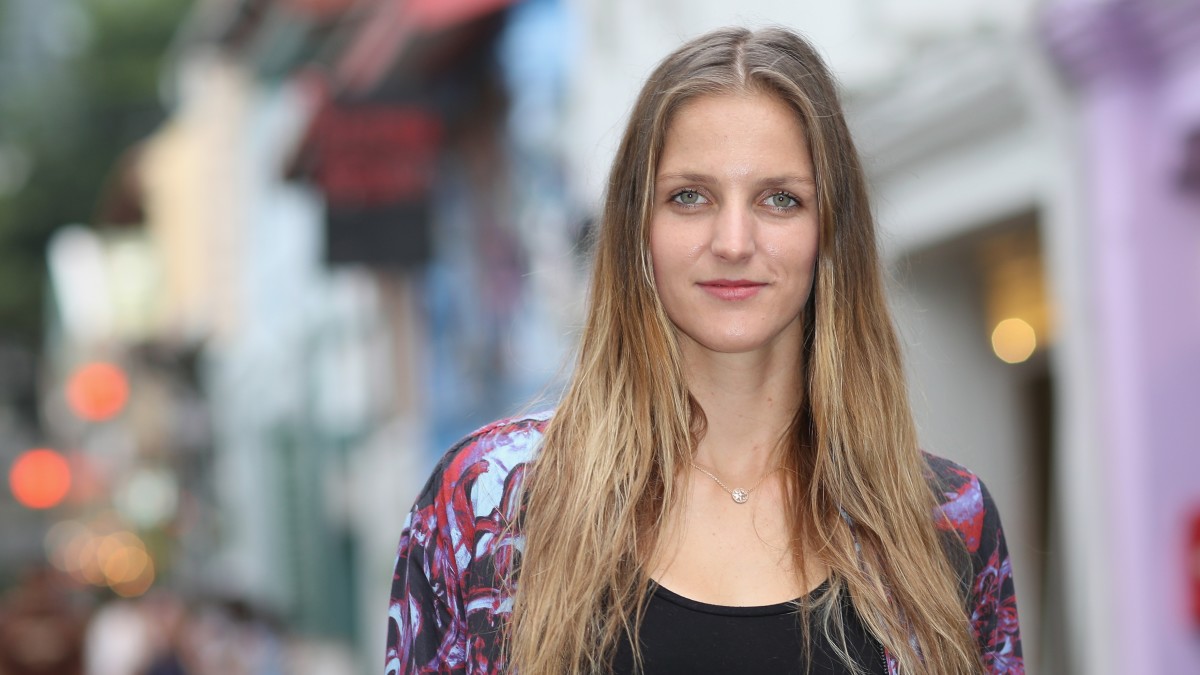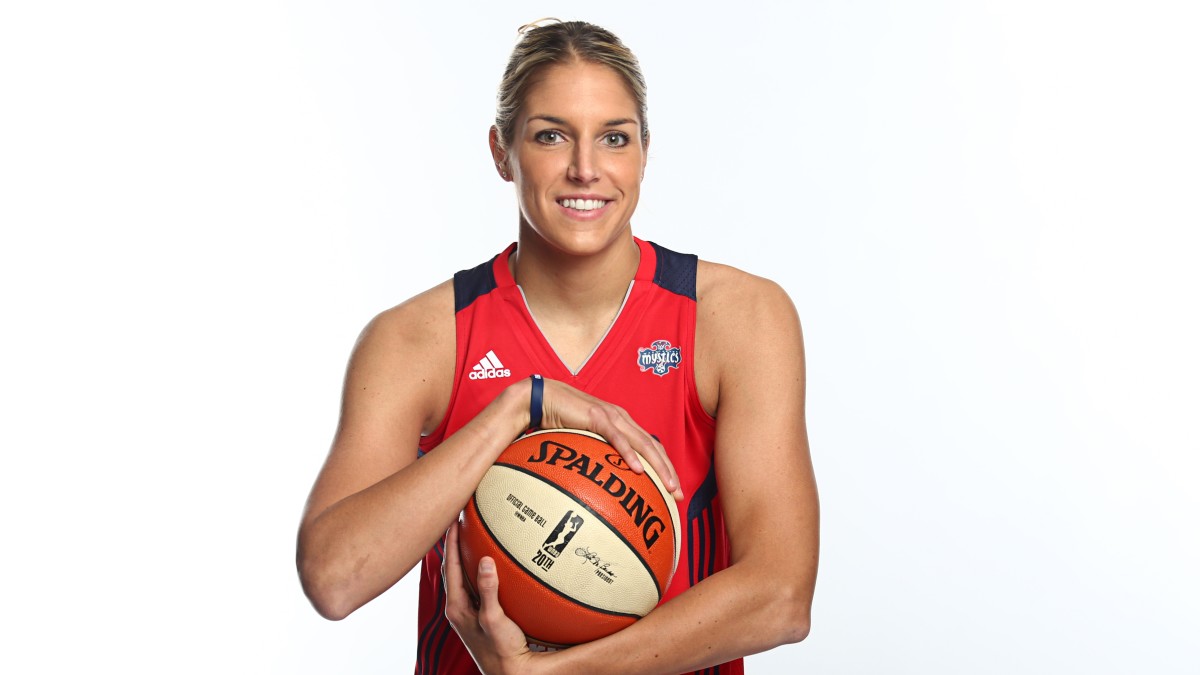Mailbag: How Much Should We Care About the Laver Cup?

Before this week’s ‘bag, let’s quietly note the Novak Djokovic has spent more weeks at No. 1 than Jimmy Connors did.
MAILBAG
Jon, it's Laver Cup time and I am trying to figure out how much to care!
—Giancarlo, New York City
• It’s Laver Cup Week, so let’s start here. In short: care. In a brief amount of time—like, two years—this has become one of the most anticipated events on the calendar after the Slams. This ticks off so many of tennis’ virtues: the “golden age” and the stars it’s minted; international appeal; diversity of ages; doubles; shotmaking; camaraderie; team formats. The event organizers—wisely, I think—strenuously object to any suggestion that this an exhibition. The players have internalized this message. You’re left with honest competition.
As I mentioned last week, if I were playing McKinsey consultant, my suggestion would be to reconsider the format. “Europe against the rest of the world” doesn’t really work as a battle line, not when it’s been more than a decade since a player outside of Europe has won a major. Why not simply let Federer and Nadal/Djokovic draft teams? Note the precedent in the NBA All-Star Game.
HERE’S a catch-all: a number of you wrote in about Kim Clijsters and her decision to “un-retire”—a term and concept I first heard in boxing, but one really popularized in tennis. (And women’s tennis in particular.) I was surprised by the overall level of skepticism. Two thoughts struck me. First, this underscores the difficult decision players that athletes face over whether to retire. You possess an incredibly rare talent. What a blessing. But what a curse to be in a line of work where that talent diminishes early in your life. And once you quit, you’re unlikely to be as good at any one skill ever again. It’s totally reasonable that an athlete would want to revisit the decision to stop and try and revisit their gift.
Another blessing/curse: in most sports, the decision to quit is often made for you. Teams don’t offer you a new contract or don’t sign you when you make yourself available. In individual sports, you are not encumbered that way. You—and only you—own your career. That also means you own the decision over whether to stay or go.
I give Clijsters a lot of credit simply for giving this a try. She had—literally—a Hall of Fame career. It’s been a long time she was in the WTA workforce. She has a family. This will be a real test, in many respects. But she’s not taking up a roster spot, the odd wild card notwithstanding. She’s not hoarding cap space. She’s not preventing a team from moving on. Tennis is a meritocracy. If you’re good enough to stay in the workforce, you stay. If not, not. Wish her well trying.
Jon, I am surprised you and others have not talked more Bianca Andreescu’s return of serve. To me, that was her key to victory. And it how she won the last point of her amazing tournament!
—Cassandra, Toronto
• We all had so many options, something was bound to get short-changed. But sure, we can add “return of serve” to Andreescu’s basket of deliverables. In addition to the usual shiny-new-car appeal, Andreescu brings extra appeal because of her variety and ability to play in so many keys. She can hang in rallies with anyone and doesn’t want for power. She can also change tactics and play with more margin. She can grind, she can slug, she loves unspooling the drop shot. She can serve, but as you note, she also treats the opponents’ serves the way Michiko Kakutani treats flabby novels.
Long as you brought it up…the last Andreescu match point in the final was dripping with symbolism. Serena Williams’ serve is one of the great weapons in the history of tennis. To win your first major by rocketing back a Serena Williams serve with so much pace and accuracy that Serena didn’t touch the return? (Essentially, hitting an ace of a return?) …that’s some rich stuff right there.
How would abolishing the service let work? Would they just “play it where it lies”? Or would anything now considered a let be a fault instead? If it’s the first, I foresee a lot of cheapo, doink aces when the ball randomly clips the net and drops in the service box, which seems unfair to the returner. If it’s the second option, well, that seems unfair to the server since the ball still made it into the service box. And tennis is all about fairness. What am I missing?
Also, how will tennis agree on this when they can’t even call it the same thing? I swear I’ve heard ESPN’s people say “net cord,” “let court,” “let cord,” and “net court” all in this one U.S. Open.
—P.
• See, if we did away with lets, the semantics would clear up immediately. We’d obviate “let cord” and “let court,” as there would be no lets. We’d be left with net cord, a term no one but Bud Collins seemed to use. Me? The advantages for making the change and doing away with lets seem to me twofold. First, there would be consistency. If the ball clips the tape during play, you “play it where it lies,” as you put it. Why should it be different for serves? Also, you are saving time by doing away with the do-over. Actually, a third advantage: you’d eliminate a source of controversy. There’d be no disputes about whether the ball clipped the tape. You’d simply care if it landed inside or outside the service box.
Downsides? There would be a lot of cheap-o points. Either the ball would hit the net and dribble over meekly, or the ball would pop up and give the returner a de facto sitter. What’s your threshold for luck? That’s probably going to determine whether you want this or not.
Looks like it’s going to be 20-19 by the end of 2019...and at least 20-20 by the...well, you get it.
—Sean, San Diego
•Might you be referring to the French Open?
More generally, we’ve gotten some complaints about the ubiquity of the GOAT discussion. Doe this Amazing Race, as it were, consume too much of tennis’ dialogue? Some of you point out one can scarcely talk about Taylor Townsend’s backswing or the court speed in Beijing without somehow connecting it to 20-19-16. Yet we have perhaps the three most skilled practitioners playing at once and locked in this derby that gives this historical heft to every Grand Slam. Seems silly to overlook the conversation.
I'd like to take issue with everyone's shock that Dimitrov beat Federer. I'm not denying that Dimitrov's win over an out-of-form Federer was an upset, but it doesn't seem like any of the media saw his recent match at Cincinnati where he lost to Wawrinka in a third-set tiebreak. Also no one mentioned that he's had the misfortune to have to play Wawrinka in the first round in recent majors.
The Dimitrov in Cincinnati was a true Baby Fed; he stayed in rallies, volleyed, hit through his backhand, and was in the moment, just like he was was against Federer in NYC. In short, he was finally given a favorable draw and with the walkover with Coric, it is NOT that surprising that he made it to the semis. He is a top-10 player with his newly refurnished game and mental fortitude.
—Alan K.
• Yes, let us linger a bit on Dimitrov. In the last week of July, Dimitrov lost his first-round match to a player ranked outside the top 400. Heading into the U.S. Open, he was sub .500 for the year. He had equipment issues, he had shoulder issues, he had confidence issues. He was 0-7 lifetime against Federer. Meanwhile, Federer was rounding into form, coming off two 79-minute matches and, we thought, buoyed by the absence of Djokovic in the tournament.
You make many good points. I would add that Dimitrov, despite his ranking is A) a former top five guy, B) no stranger to big matches in big venues and C) aware that on a given night he can beat anyone. Still, I stand by the point that this was the biggest upset of the tournament.
The Laver Cup, an event honoring the legacy of greatness, sportsmanship, fair play and the integrity of tennis as represented by Rod Laver, has invited Nick Krygios to play. Revenue trumps sportsmanship?
—Martin
• You forgot two key details: A) The man for whom the Laver Cup is named—an impossibly lovely and gentle figure not exactly known for making tendentious remarks—has suggested Kyrgios perhaps ought to be suspended. (Awko taco, as the kids says.) B) Now that the Laver Cup bears the imprimatur of the ATP, any suspension would now be complicated/delayed.
The irony: in the Laver Cup environment—where you can amortize the stress and be part of a team fabric—presents Kyrgios at his best and most comfortable. Not only can we guarantee you that he will not act badly in Geneva; we can predict with some certainty that will be downright charming and an enthusiastic teammate. If only he could replicate this format at every event….
Isn't it fair after four years to call the renovation of Arthur Ashe Stadium a disappointment, if not a failure? In a very narrow sense it has achieved its purpose: They can keep playing tennis when it's raining. But it seems to have resulted in a bad atmosphere for tennis: too many seats for too many uninterested fans, and conditions that are too often too noisy (because of the chattering, uninterested fans and what I assume was poor acoustic design), too humid and stifling for the players (which I assume must also be due to poor design). This is based only on my observations on television—I haven't been there since the renovation—but it wasn't like this before the roof.
Does Louis Armstrong have the same problems now that it has a roof? How do the courts with roofs at the Australian Open compare?
—Srikanth, Richmond, Va.
• I heard versions of this complaint multiple times during the U.S. Open: Great, there’s a roof, ensuring that the fans at home and the fat cats in the catered suites have the guarantee of live tennis, rain or shine. But at what cost? (Apart from $600 million in debt service?) The competition gets distorted as the stars stay on schedule and have certainty, while the journeyfolk still sit out delays. The conditions under the roof are humid to the point or unbearability—both for the players, and the fans in their sundresses and golf shirts.
All fair points. I still say that, on balance, covered courts are forces of good. Having sat through innumerable rain delays, I can speak to the frustration. And that’s as an observer and not a player. Time and again, events were ruined by rain. The television networks reconsidered their investment when they had to air replays. Fans flew across oceans only to arrive on site and huddle under overhangs. The media left the feel-good stories to write stories that encapsulated the gloomy mood. The Krickstein family was forced to relive that damn Jimmy Connors and his 39-year-old fist pumps. Let’s not get too nostalgic for the past.
So who knows why, but the one Mailbag submission I remember was when you got ripped for saying Fleetwood Mac: Little Lies was lightweight and somewhat beneath the band (full disclosure: I like it)
Well, this ain’t Little Lies.
—Anonymous
• If I could turn the page, in time then I'd rearrange just a day or two...
SHOTS, MISCELLANY
• This week’s unsolicited tennis book recommendation: The Goat by Roger L. Simon:
• The most bizarre (kinda) tennis story you will read (h/t Tennis Life).
• Angie Kerber has a new coach, it seems.
• Noami Osaka didn’t play last week and yet still won.
• This week’s LLS comes from @tnsBAW who likens Karolina Pliskova (or, for that matter, Kristyna Pliskova) to WNBA star Elena Delle Donne.


